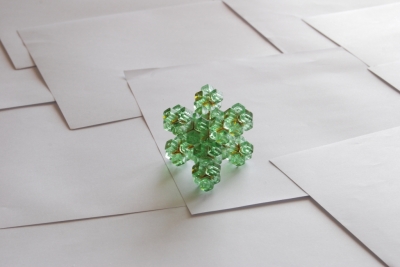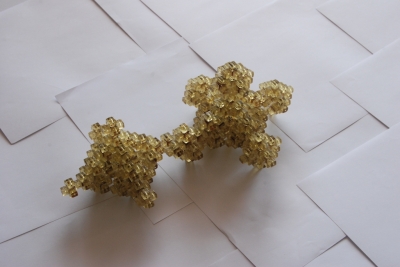This was part of a collaborative project with artist Fiona Gannon and architect Sorcha Murphy. We were looking at how mathematical ideas may be used in finding forms and began exploring cellular automata, which are visual rules that determine the next step in building a structure based on its state. The structure may initially be very simple but as a rule is repeatedly applied it can grow in complexity. A good example of this is cellular automata rule 30. The fact that they’re visual and their behaviour may be unpredictable made them a good place to start. Physicist Stephen Wolfram’s book A New Kind of Science has many examples of cellular automata but as we looked through the book it became apparent that many algorithms covered in it would need to be implemented in software. Would it be possible to find interesting rules that could be made by hand? The snowflake algorithm in the book uses a hexagon as the basic building block, but a cube is similar in that it has six faces. We adapted the rule to work with cubes and went from there.
The structure starts out simply, as can be seen below.
It starts to grow in complexity after more iterations.
Different parts of the structure may be grown by applying the rule to them, which leads to different forms.
The forms keep something of the hexagonal snowflake rule and some of them look quite like snowflakes when looked at from certain angles. Keeping the rule intuitive enough to be applied by hand is quite a constraint, but another way of looking at it is that this gives the rule a certain elegance. There are likely more such rules out there which can be applied to different building blocks, it’s just a matter of finding them!







Leave a comment
Comments feed for this article